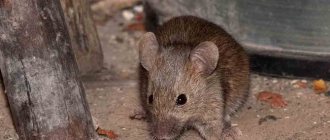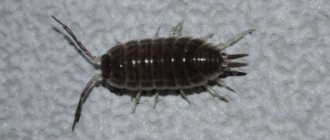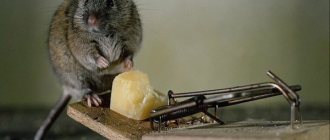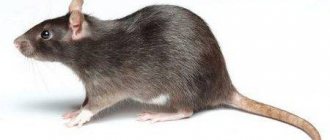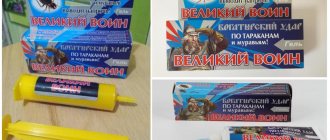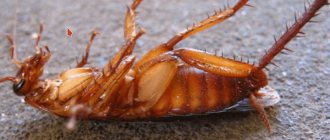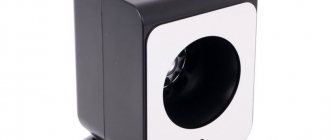Mice live next to the man of the millennium. Many ingenious and dangerous methods have been invented in the fight against “uninvited guests.” But as soon as autumn approaches, you hear the patter of little paws, squeaking, and rustling. They not only create an unpleasant smell in the house, but also chewed things and spoiled food.
Mice live next to the man of the millennium. Many ingenious and dangerous methods have been invented in the fight against “uninvited guests.” But as soon as autumn approaches, you hear the patter of little paws, squeaking, and rustling. They not only create an unpleasant smell in the house, but also chewed things and spoiled food. Of course, you can use poisons and mousetraps, or you should try more humane means, for example, repelling with odors. These are proven, folk methods, thanks to which rodents leave a person’s home and rarely return to it.
What sounds scare mice?
Rodent repeller devices are very popular now. There are more than enough options and all kinds of modifications. But besides the frequency oscillations emitted by the device, mice are afraid of other sounds:
- quiet ones, which are created by their natural enemies, quietly creeping up on their prey;
- loud sounds made by people (screaming, music) or falling objects;
- strangers, if the animal does not know how to react to them;
- emitted by the mice themselves when they warn of danger, are afraid or fight in their death throes.
Note: The sounds that come from rodents are not audible to humans, since their frequency is up to 70 kHz. That's why they are called ultrasound: they are inaccessible to the human ear. They are what are used in devices.
There are ultrasonic frequencies that animals do not care about and that frighten them. Therefore, the task of the devices is to generate sound in the required range. Mice begin to panic when the device is operated in the following ranges:
- 25-28 kHz - the mouse is in pain and screams,
- 32-33 kHz - danger signal emitted by the animal,
- 35-60 kHz - squeak, expressing discomfort.
It is difficult to guess at what frequency a device must operate for a rodent to be afraid of it. Over time, he will get used to the same type of signal. In modern repellers, frequencies periodically change. Moreover, this is done in random mode, so the mouse cannot get used to the sound.
Article on the topic: Ultrasonic mouse repellers
This is the best way to get rid of a family of mice in a small house. I installed the repeller, plugged it in and forgot about it. There is no need to set traps or poison animals. Everything is simple, convenient and accessible. The main advantages of ultrasonic “saviors”:
- ultrasonic waves affect all mouse droppings, so they leave their homes in full force,
- rodents do not die, which avoids unpleasant odors of decay,
- devices operate in the desired rhythm and mode and do not need adjustment,
- the repeller consumes a minimum of electricity,
- The warranty period is 10 years.
Is it possible to use a phone or computer as a mouse repellent? This idea has been used more than once in attempts to record the required sound on an electronic device. But the speakers are designed to reproduce sounds accessible to humans, not rodents. So this idea turned out to be useless.
Note: Some people try to scare away animals using cruel methods. They nail a live mouse to the wall of the barn and it “screams”, scaring its relatives. The same effect is achieved by burning a live rodent. But this method does not last long. A little time passes and the mouse hordes return.
Preventive measures
It is advisable to engage in extermination of rats before repairs . This can be done in a variety of ways:
- Glue-based traps with bait in the middle: they are installed not far from the hole, so that later they, along with the stuck victim, can be easily removed;
- Mechanical rat traps: installed along the route of the rodent;
- Repellent odors;
- Ultrasonic rat repellers.
One of the popular fishing methods is Victor electric rat traps with ready-made baits. In appearance, the trap is a two-story container: the rat runs into it, goes to the second floor with the bait, is subjected to a strong electrical discharge and, killed, falls into a special compartment on the first floor.
Repelling mice and rats using ultrasound (for example, the Tornado-200 or Tornado-300 device) is one of the most promising methods of deratization.
It is worth remembering that the ultrasonic signal of the trap does not pass through hard surfaces, in addition, the pile of carpets can hide its effect.
At the same time, in order not to resort to using the device every time the rats return to the home, it is necessary to worsen their living conditions as much as possible: install protective metal mesh, seal the holes.
Plants in the fight against rodents
Mice have a well-developed sense of smell, so they react to any odors. Among them there are those that scare them away, causing disgust. Since ancient times, various herbs (dry, fresh, tinctures from them) have been used in the fight against “uninvited guests.” These pleasant-smelling “repellents” are completely safe for the inhabitants of the house.
Among the herbs that are most unpleasant to mice are:
- Chamomile, the flowers of which should be scattered in the places where the food is located (fresh or dry: it works equally well).
- Wild mint, which is laid out in bunches, after drying, in places where rodents gather. You can also use a tincture from it, lubricating the places where “furry guests” appear most often.
- Elderberry, the smell of which is especially unpleasant for animals. It is enough to lay out twigs with berries on the shelves of the kitchen cabinets, and the mice will stop rustling in the kitchen at night.
This is interesting: Rodents are so disgusted with elderberry that they avoid houses next to which this plant is planted. So, if you live in a private house, plant elderberries nearby and do not be afraid of a mouse invasion. Planting mint bushes in the backyard will also come in handy: mice will avoid them.
- Wormwood is a herb whose smell is quite pungent and is not liked not only by pests, but also by some people. Dry bunches of grass are laid out on kitchen shelves and in corners (or around the perimeter) of the house.
- Tansy also has a pungent odor, causing unpleasant emotions in “uninvited residents.” Bunches of dried grass are laid out around the house and not only mice, but also ants and flies leave it. By repelling mice, you will also get rid of other unpleasant inhabitants of the apartment.
- Ledum is a poisonous plant, but due to its high content of essential oils it can repel pests from a long distance. It is enough to lay out just a few bunches of wild rosemary in the apartment.
- Black root is poisonous not only to mice, but also to people, so it should be placed only in places where animals are frequented and used carefully, especially if there are children in the house.
- 8. Hazel grouse bulbs have a garlicky aroma and mice avoid it.
Important: It is advisable not to just lay out the bunches of herbs, but to first dip them in boiling water. So there will be a smell
the strongest and stay in the air longer. Place safe plants throughout the house, poisonous plants near mouse holes. The “poison” should be updated once a week.
You can try placing burdock in the holes. Gray pests do not like thorns; they avoid them. Therefore, they will not climb into the holes where the “spiny balls” are laid out. They will either leave, which is doubtful, or make new moves.
Folk remedies that remove mice from the house include ordinary stove ash. It is scattered on dry floors, in the cellar, and in other places where mouse paths pass. The ash contains alkali, which gets on the paws of mice and corrodes them. Mice lick it off, thereby causing irritation in the mouth and stomach. Small broken glass is used as a means of pest control. Mouse feet are delicate and splinters cause serious and painful injuries. Because of ash or broken glass, they may change their location.
Global problem
Special organizations are recognized to monitor the number of rodents in the city and prevent their mass reproduction. They receive money for exterminating pests. If a rat is discovered in an apartment in a multi-story building, it is necessary to sound the alarm, alert all neighbors, and contact the appropriate authorities.
Initially, it is necessary to conduct a survey to find out how many victims there are. You can find out who to call if there are rats in the entrance via the Internet. Most often found in apartment buildings are gray rats or pasyuks, but other types of rats can also appear. There is a hotline in every locality, call it.
It is necessary to complain about rats in the house to the SES, Rospotrebnadzor, and insist on solving the problem of fighting rats with the building manager.
It is much easier to fight rats in an apartment if the cause of mass migration has been established. Rodents live in sewers for years, and if food is available, they do not leave their nests further than 10 m. But under certain circumstances, they begin to move further, ending up in the basements of residential buildings and apartments on the first floors. Gradually rise higher. It is imperative to complain to the relevant authorities.
Help of essential oils in the fight against rodents
Knowing what smells mice don’t like, you can, if not get rid of them forever, then scare them away for a long time. Many herbs also contain essential oils, but their concentration in dry mixtures is not so high, and therefore the smell is rather weak.
The most effective essential oil with a sharp and persistent aroma that rodents do not like is peppermint oil. Before using it, you need to find holes or holes through which mice enter the house. It is these places that are subject to treatment, which is used in 2 options.
Option 1: Moisten several cotton pads or balls of cotton wool with a mixture of oils. We put the product in the hole and seal it with tape so that the smell does not penetrate into the apartment. The mixture contains: 50 ml. vegetable oil + 20 k. peppermint oil. This composition can be prepared in advance and stored in a tightly closed container.
Option 2: Pour the prepared mixture into a spray bottle, mix thoroughly (shake before use) and spray in the kitchen, along the baseboards, in places that rodents visit most often. The composition consists of 1-15 k essential oil + 300-400 ml. water + 10 ml. alcohol
Note: A one-time treatment will not help; it should be repeated several times. Essential oil will not kill mice, but will only repel them. But if it gets on the pest’s fur, it may die. Then you will find more than just essential oil aromas.
Poison Attack
If conditions permit, mice in an apartment can simply be poisoned
The most merciless, but also effective way is to poison. It could be "Rat Death" in bags. Special flavoring additives promote its active absorption. Other poisons act on the same basis. Destruction of internal organs also occurs with the help of baits that do not contain toxic substances, but which contain components that have a detrimental effect on the animal’s body. A powder mixture of gypsum and flour (1:1), which gets into the esophagus and is washed down with water, leads to the death of animals. Another remedy is prepared using the same scheme:
- plaster – 2 parts;
- flour – 3 parts;
- sugar – 5 parts.
After adding water, prepare a plate-like mixture from the ingredients and spread it out as bait.
On the line of battle - spices and seasonings
Fighting mice with folk remedies is quite effective and safe. In addition, it brings certain results: if it does not destroy, it certainly repels pests. Among such means, spices and herbs occupy not the least place. They have a strong aroma (no worse than chemical protection), which rodents avoid.
The smell of coriander or cilantro causes the strongest dislike of mice. All you need to do is place cilantro seeds or powder in your kitchen cabinets and mice will stop eating your home food supplies. Sprinkle the powder in those places that furry pests visit most often.
Synthetic flavorings also help a lot in the fight against rodents. They can be bought in specialized stores or ordered online. For us they have a pleasant aroma, but for “furry guests” they do not. Their cost is more expensive than coriander, and the effect is quite strong.
How to find the source
To eliminate an unpleasant odor, you must first find its source. This is easy to do if the mouse corpse lies on the floor and is visible to the naked eye. But very often rodents die in hard-to-reach places. How to find the source of the smell in this case?
In old furniture
Rodents can make a nest or simply hide in old furniture. If the smell comes from the sofa, you need to unfold it and carefully inspect it. A dead mouse may end up under removable parts of the body or under the upholstery; to find the corpse, the boards must be unscrewed and the upholstery removed or torn off.
Under the baseboard
Mice that run into an apartment can climb into the gap between the wall and the baseboard and die there. In order to find the corpse of a rodent in such a shelter, you need to dismantle the baseboards.
In the ventilation
A favorite place for mice to hide is ventilation. If the rodent died there, the smell will spread throughout the room.
In a bag of cereals or flour
Animals are attracted to food storage areas. If cereals or flour are not stored in sealed containers, but in bags or bags, mice gnaw through the fabric and get inside.
Smells that mice try to avoid
If the premises are not residential (garage, barn, warehouse) or left for a long time, then removing mice from the house is a matter of technique. Like people, they have unpleasant odors:
- burnt rubber,
- burnt wool or fluff,
- kerosene,
- naphthalene,
- cheap Soviet-made perfumes.
In a residential apartment, such “aromas” will harm their inhabitants: harmful combustion decay products will enter the body. But if you enter your home every now and then, you can create a toxic atmosphere.
Important: When setting fire, to avoid poisoning, use gloves and a respirator. Do everything quickly, closing doors and windows. You can enter the room a few days after thorough ventilation.
There are smells that mice love and that can be used to lure them into a trap. For example, they are attracted to the smell of beer. The bottle needs to be placed at an angle and the neck needs to be “paved a path”. At night they will come for a beer, and in the morning you will find them in a bottle. Of course, not all at once, but several individuals will be caught. They will slide down the slippery neck and will not be able to get out. It's not as scary as glue, poison, mousetraps and other terrible devices.
Intimidation method
To prevent mice from appearing in the apartment or leaving it, repellers are actively used: ultrasonic, electromagnetic or combined. It all depends on the method of influencing animals. In the first case, sounds are generated at frequencies that are beyond the sensitivity of the human ear, but are irritating to mice. In the second, the emitter generates electromagnetic waves that irritate the nervous system. A combination device combines these two methods. In all cases, panic and irritation are sown, and the mice leave the “restless” place. The product is safe for both rodents and humans, as well as pets. “Spectrum” is in particular demand: its coverage area is 300 sq. m., it is not afraid of high humidity and voltage surges in the network.
Biological control agents
We have known the fairy tale about what mice are afraid of since childhood. This, of course, is a treacherous cat who only thinks about how to eat the stupid mouse. Indeed, a young and fighting cat is able to cope with a large number of rodents. And if this predator lives in the house, then there is no reason to worry about a mouse invasion. She will catch a few victims, the rest will leave on their own. Interestingly, the cat usually does not eat the mouse, bringing the owner a trophy.
Statistics show that one cat catches up to 60 mice a year, keeping its territory under control. She is a lone hunter who goes through all the hunting rituals, tracking and catching a rodent. But the mustachioed predator can infect the owner with an allergy or infectious disease obtained from mice, for example, toxoplasmosis.
Note: If you take a predator from your neighbors to save you from rodents, of which you already have quite a lot, then it is not a fact that he is able to cope with them. The infestation of mice is “not something he can handle.” In addition, the animal should not be shy. Not all pets exhibit hunting instincts.
Other animals also hunt mice: dogs, ferrets, weasels, and some birds of prey. Your indoor dog, of course, will take part in catching rodents, but you can’t expect much help from other predators, because they hunt in natural conditions.
Protection against rodents during construction
You can try to protect yourself from mice even at the construction stage. It is much easier to prevent a mouse invasion than to deal with them later.
Method 1 - Expanded clay castle
For this, a so-called “pie” is made, consisting of several layers - expanded clay and OSB boards. Such a cake must be at least 10 cm thick and requires the presence of layers:
- A layer of expanded clay of at least 10 cm is laid directly on the ground and covered with a water barrier
- 1 or two layers of OSB-3
- again expanded clay gasket
- finishing layer of OSB treated with boric acid or synthetic wax
Method 1 - Protection with fine mesh
A less labor-intensive, but very reliable method is to use a welded mesh made of galvanized wire with a cell of 5 * 5 mm. It can be laid between the subfloor and the main floor, and also stretched along the foundation strip to a depth of at least a meter. Mice will not be able to get into the house through such a mesh.
Noise and squeaking at night, eaten away insulation in the floor, unpleasant smell? Apparently you have mice infestation. These, at first glance, harmless favorites of Disney cartoons are a real headache for all homes in all countries, for the sake of which new technologies are invented every year, and even new breeds of animals are bred. What are the general methods of dealing with them? And how to secure a bathhouse or country house left unattended? Now we will find out everything.
Prevention of mouse infestations
If you have gotten rid of rodents, there is no need to relax. They may visit your home again. Therefore, try to follow a number of simple rules:
- Store products in refrigerators or closed containers out of reach of mice.
- The apartment must be in immaculately clean condition.
- If the house (apartment) is old, then seal all the holes and openings so that “not a single mouse gets through.”
- Place wormwood, mint, or cotton balls soaked in essential oil in the corners.
- Get a mustachioed hunter cat.
Important: If you notice the smell or traces of mice, do not hesitate. You need to take action right away, since the females are very fertile and getting rid of a large mouse family will subsequently be much more difficult.
Sometimes mice cause us sympathy, because they are so cute and fluffy, they have funny habits. There are hobbyists who keep pet mice. But remember that they carry dangerous diseases such as tularemia, leptospirosis, salmonellosis and others. In addition, they need to constantly grind down their incisors, so mice chew on everything: furniture, wires, walls, floors. Their appearance in the house is associated with a lot of troubles. And the methods you just read about will allow you to get rid of “uninvited guests.”
If you find an error or inaccuracy, please select a piece of text and press Ctrl+Enter.
Danger of rats
It would seem that the rats live under the floor, and let them continue to live. There is probably no house where these pests would not exist. However, the harm they cause is real, and if this problem is not neutralized in time, the consequences will be dire.
So, rats under floors are dangerous:
- Constant fuss and noise at night . During the day, you most likely will not notice the squeaks and other sounds that rats make, but at night, when the house falls asleep and plunges into silence, constant noises from somewhere below begin to bother you. Because of this, there may be problems with sleep, and if the person is also impressionable, then mental problems;
- Problems in water supply and energy supply . Anything that gets in the way of rats will sooner or later be chewed through. Cables, telephone and Internet wires, fragile pipes of the water supply system are subject to this fate;
- Destruction of insulation . Most of the insulation materials that you decide to use to insulate your walls will most likely turn into either dust or a rat's nest, since its composition is well suited for breeding;
- Excrement . When rats come to the surface, they will leave their waste everywhere, which can become a serious problem during cleaning, as well as for children who can eat it;
- Diseases . Everyone knows that rats carry a terrible number of equally terrible diseases. And the more of them there are in the house, the higher the risk of catching some unpleasant disease. And if rats are starving, they can easily attack a person, which will further increase the risk of illness due to a bite;
- Corpse fumes . If the rat died under the floor, then there is no way to get it out. And her cold corpse will decompose for quite a long time, emitting corpse fumes, which, in addition to an unpleasant odor, can be harmful to health. The situation becomes especially dangerous in summer under the influence of high temperatures. Read about a way to get rid of corpse smell here.
If you find that a rat has chewed holes in the floor, they need to be repaired immediately. This can be done using sheets of metal, after throwing poison and broken glass there. Other rats will come through the newly formed holes in the floorboards, and the more quickly you react, the higher the chance that there will be fewer rats.
Features of processing various surfaces
The biggest problem arises when treating porous surfaces, as they tend to absorb odors. This feature is taken into account when disinfecting various materials.
Chipboard
Before processing, the chipboard must be freed from dust and dirt and degreased, and then a disinfectant must be applied on both sides. The final stage is to protect the surface with sealant or polish.
Drywall
If the drywall is soaked through, it is impossible to remove the smell from it. It will be easier to throw away the damaged sheet and replace it with a new one.
Natural wood
The wooden surface is cleaned in several stages:
- First of all, use any absorbent to remove residual liquid; for this purpose, cover the surface with an even, dense layer for some time.
- After removing the absorbent, the affected area is disinfected using folk remedies such as vinegar or potassium permanganate, or professional sprays.
- Finally, the wood is treated with sealant or polish.
